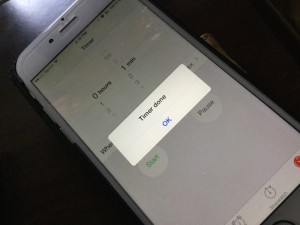3 Tips: How to Reduce Stress caused by Smartphones
Our Key Connections Speaker for July was Dr. Frank Wood. Dr. Frank’s specialty is thriving with stress. Everyone has stress, right? In his presentation, Dr. Frank brought up some interesting statistics about smartphone use:
 Of all smartphone users…
Of all smartphone users…
58% check their phone every hour
54% check their phone in the middle of the night
39% check their phone in the restroom
30% check their phone while dining with others
Dr. Frank gave some useful tips for creating healthy mobile phone boundaries that will reduce stress and have a positive impact on our daily routines and our relationships:
1. Use a 2-part Map to help understand what is causing stress. A two-part map is a tool that encourages understanding stress differently. It is possible to disconnect from stress and deal with it in a healthy way:
The first step is to write down on a clean sheet of paper what is causing stress.
Then write down the immediate thoughts associated with that stress.
The next step is to turn over the sheet of paper write down the same topic and take a couple minutes to become more conscious of our surroundings, gravity, space, sounds, the floor, the scent, the air.
Then write down thoughts on the same topic.
This 2-part mapping exercise encourages relaxation and allows for an unfiltered view of what is causing stress.
2. Tap into our senses to become more focused and make better decisions. When we make decisions based on stress, the result is often regret, but when we take a moment to tap into our senses before making decisions, our decision making is clearer. Do we pick up the phone because it is ringing or because we really need to pick up the phone?
3. Understand the “almost moment” to be one step ahead of our habits. Sometimes we make decisions based on habits. The “almost moment” is the very moment when stress sets in. At this moment, thoughts, emotions and body tension cause pressured or reactive behavior; being conscious of this helps reduce stress by setting better boundaries. Becoming in tune with the “almost moment” encourages good decision making.
 Dr. Frank’s presentation was very helpful for understanding thoughts, emotions, body tension and how to reduce stress associated with smartphone use and decision-making. Smartphones are a part of our lives, for sure, but we can make good decisions about when we need to look at and answer them. To learn more about Dr.Frank and his methods for reducing stress, check out his website.
Dr. Frank’s presentation was very helpful for understanding thoughts, emotions, body tension and how to reduce stress associated with smartphone use and decision-making. Smartphones are a part of our lives, for sure, but we can make good decisions about when we need to look at and answer them. To learn more about Dr.Frank and his methods for reducing stress, check out his website.
